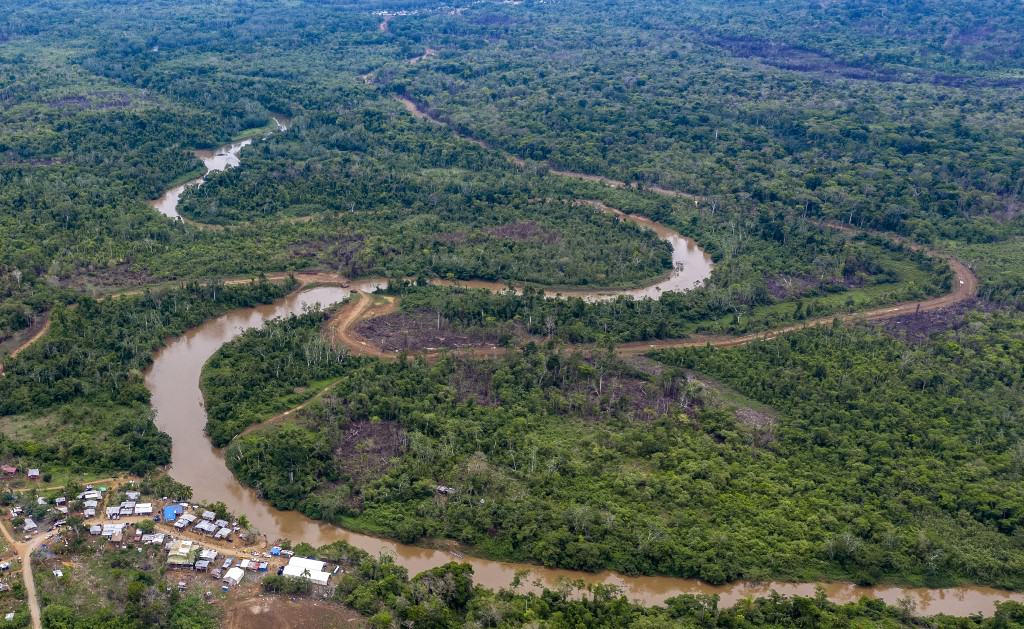Migration to the United States through the Darién jungle, on the border between Panama and Colombia, is not going to stop, despite Washington’s new regulations and the dangers of a treacherous route where deaths are on the rise.
“No one knows what next year will be like, but in the coming months, we have to prepare for the worst,” said Giuseppe Loprete, head of the International Organization for Migration (IOM) Mission in Panama.
The natural Darién border, 266 km long and covering 575,000 hectares, has become a corridor for South American migrants trying to reach the United States by traveling through Central America and Mexico.
According to Panama’s Migration Department, from January 1 to August 8, more than 267,000 people had crossed the Darién, even though the United States warned it would not admit migrants who entered Panama irregularly.
This number shatters last year’s record when 248,000 migrants traversed the Panamanian jungle in pursuit of the “American dream”. At this rate, the Panamanian government estimates that by the end of the year, about 400,000 migrants will have crossed the Darién.
“We are very concerned about the conditions in which we see migrants arriving and the fact that this migration is not going to stop,” Loprete said.
On May 12, the United States began a new migration era by cracking down on migrants who avoid “legal avenues”. At the same time, Mexico suspended transit permits allowing US asylum seekers to move north.
Deaths on the rise
The number of migrant deaths in Panama has also increased compared to 2022, authorities said.
“Last year […] there were 62 deaths […], to date, we already have 71” so far in 2023, said José Vicente Pachar, director of the Institute of Legal Medicine of Panama.
The 2023 figure includes 37 migrants who died in February when a bus overturned near the border with Costa Rica. Two Panamanians also died, the driver and his assistant.
Forecasts point to a higher number of victims in the coming months. “It’s logical to deduce that the number of deaths will increase” due to the rise in migration, Pachar warned.
The Darién is fraught with dangers such as wild animals, torrential rivers, and criminal gangs that rob migrants or demand payments to guide them on their route.
Strictly speaking, the Panamanian government does not know the exact number of dead migrants due to the jungle’s inaccessibility, lack of reports, or the abandonment of bodies, which are sometimes devoured by animals.
“Our statistics reflect a minimal percentage of the real number of bodies” in the jungle, Pachar acknowledges.
Alarming situation
Most of the migrants who entered Panama this year through the jungle are Venezuelans (over 150,000), Ecuadorians (37,000), and Haitians (over 34,000), but there are also Asians, mainly from China, and Africans, especially from Cameroon.
Of the total, 21% are minors. Half of them are five years old or younger.
From the Darién, many migrants emerge injured, dehydrated, in shock, with severe allergies, and pregnancy complications, according to international agencies.
The situation in the Darién is “alarming,” recently warned Garry Conille, director of UNICEF for Latin America and the Caribbean.
“Most of these migrant families have lost everything during their journey: their belongings, their identity documents, their money; they are left with nothing but the clothes they wear,” Conille added.
Help is insufficient
Migration is driven by violence, insecurity, poverty, political crises, and increasingly, the impact of climate change in countries of origin.
To assist the thousands of arriving migrants, the Panamanian government opened several shelters throughout the country, with the support of international agencies.
Additionally, the International Committee of the Red Cross (ICRC) provided authorities with about a hundred burial plots for migrants in a cemetery near the jungle. Remains of 30 people already rest there.
“Thousands require first aid, medical check-ups, access to water, and specialized care if they have been victims of abuse, but these humanitarian services offered by the Red Cross are insufficient,” said Martha Keays, director of the International Federation of the Red Cross, told AFP.
“International cooperation between countries, bilaterally or regionally, is key because no government can do it alone,” Loprete stated.

